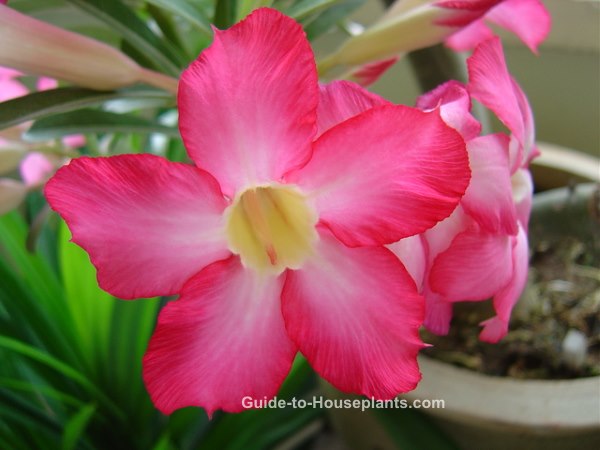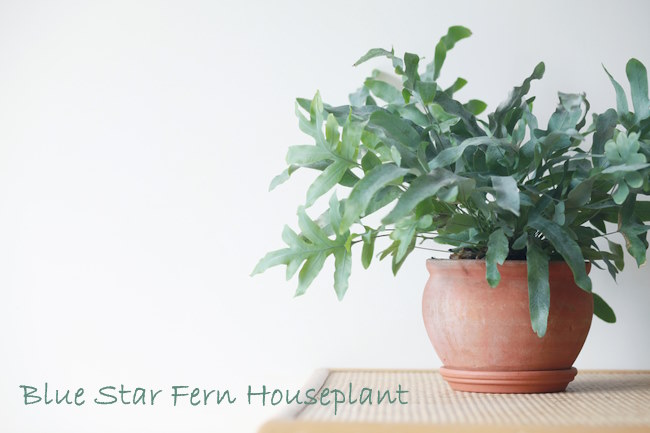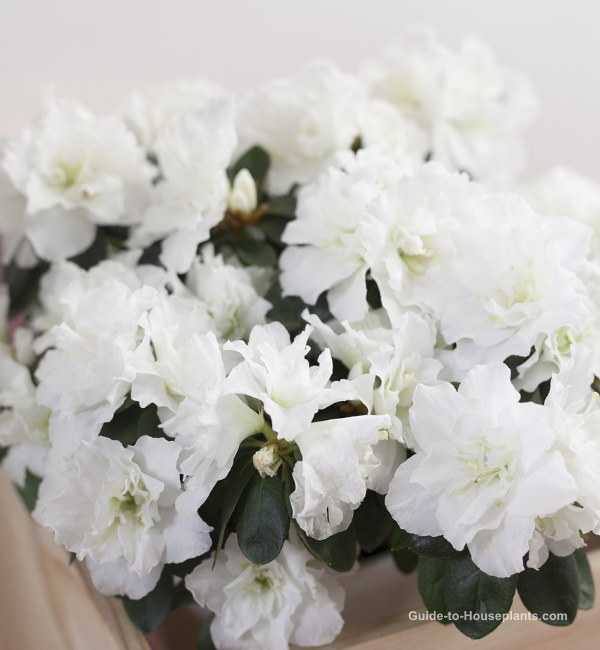Flame Violet - Episcia cupreata
Botanical Name: Episcia cupreata
Flame violet is prized for its captivating, colorful leaves that are gorgeous year-round. The small, bright flowers that bloom in spring and summer are merely an added attraction. Find out how to grow Episcia cupreata indoors and you'll enjoy it for many years.
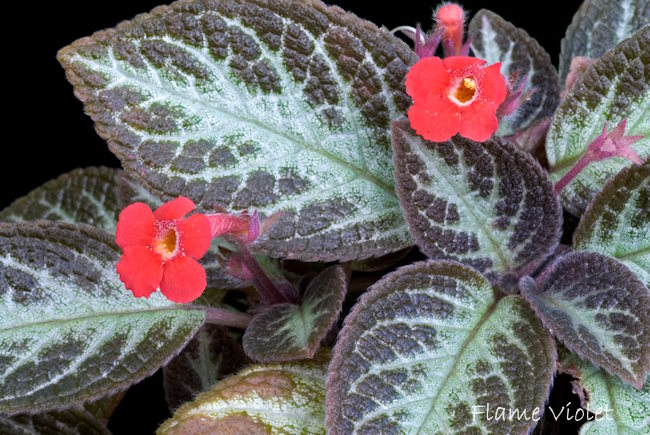 Photo jeridu/istockphoto
Photo jeridu/istockphotoGet to Know Flame Violet
Showy leaves grow in a rosette and reach 2-3 in (5-8 cm) long. They combine shades of green, coppery brown, lavender or pink, often with light green or silver veins. You'll find a variety of patterns and colors available, but all have an iridescent sheen that make this houseplant irresistible.
Mature plants will produce a number of long stems, called stolons, that will quickly cover the surface of the planter or trail. Episcias are spectacular in a hanging basket, where their stolons are allowed to cascade over the side.
You can expect bright flowers to appear in spring and continue through fall. Dainty, tubular flowers rise above the foliage and are typically red, but may be available in orange, pink or yellow. They flare out at the tips like trumpets and are sometimes fringed at the edges. Deep in the center of the trumpet is a yellow eye.
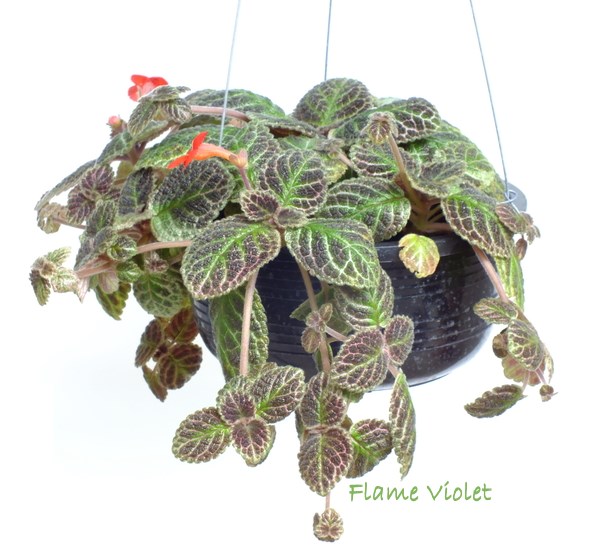 Show off Flame Violet in a hanging basket. Photo ©May1985
Show off Flame Violet in a hanging basket. Photo ©May1985Flame Violet Problems, Solutions and Answers
Brown spots on leaves? Place Episcia cupreata near a window, but away from direct sunlight, which can scorch its leaves. Also keep your plant away from heat vents or cold blasts from doors and windows.
Brown leaf tips are a symptom of dry air. See "Humidity" below for easy ways to raise the humidity for your tropical houseplant.
Wondering when to repot? Spring is the best time to repot, when Flame Violet is beginning its most vigorous time of growth. It's a good idea to pot up very couple years to refresh the soil and give your plant a little more room. Flame violet has shallow roots and a spreading habit, so a wide, shallow pot works best. Or you can put the plant in a hanging basket and allow the stems to trail over the side of the pot.
Something bugging your plant? Look for aphids on the stems and undersides of leaves. You may find these tiny pests on new growth of a young plant. Also watch for fungus gnats that are attracted to moist, peaty potting mixes. Treat any infestation immediately.
Is Flame Violet poisonous? No. This tropical beauty is safe to have in a home with children, cats and dogs. However, it's a good idea to protect your houseplant by keeping out of the reach of curious little ones and pets.
We Are Family
Episcia cupreata is a relative of the African violet. Both are in the Gesneriaceae family.
Other members of this beautiful clan include Lipstick Plant, Gloxinia, and Kohleria. All are native to tropical and sub-tropical climates.
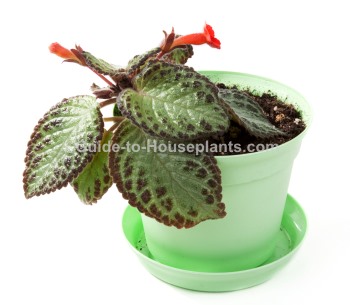 Episcia cupreata
Episcia cupreataEpiscia cupreata Varieties
You have an abundance of named hybrids to choose from. 'Chocolate Soldier' has dark foliage with silver veining. 'Tropical Topaz' is light green with yellow flowers. 'Silver Sheen' has silver-gray, crinkled leaves and red blooms.
These are just a few. Spectacular new cultivars are being introduced with more colors and patterns than we've ever seen. Choose your favorite -- they're all easy to grow.
Flame Violet Care
Origin: Colombia and Venezuela
Height: 6 in (15 cm) tall; may trail up to 4 ft (1.2 m)
Light: Bright, indirect light. Flame violets that don't bloom aren't getting enough light. Place your plant near a bright window, but out of direct sun. Like its African Violet cousin, Episcia cupreata grows well under artificial light.
Water: Water regularly to keep soil evenly moist spring through fall. Keep slightly drier in winter when growth is slowed. Use room-temperature water because cold water is a shock to tropical houseplants. And take care not to get water on the leaves, which will cause spots and may lead to fungus.
Humidity: High humidity is a must. If relative humidity drops below 50%, use a pebble tray or a cool-mist room humidifier for your plant. Don't use a plant mister because the leaves will spot and are prone to fungus. If the leaves get brown edges and flower buds shrivel without opening, the air is too dry.
Temperature: Prefers cool temperatures, especially while in bloom; 55-65°F/13-18°C at night/not warmer than 75°F/24°C during the day.
Soil: Peat moss-based mix with added perlite for faster drainage. African violet potting mix is ideal.
Fertilizer: Feed every 2 weeks spring through fall with African violet fertilizer. Do not feed in winter.
Propagation: Take single leaf stem cuttings in spring. Dip the cut end in water, then rooting hormone powder. Put the stem in moist potting mix, then firm the mix around the stem so that it stands up. Enclose the whole pot in plastic to hold in humidity. Roots should develop in about a month, and you should see plantlets form from the base of the cutting about a month after that.
